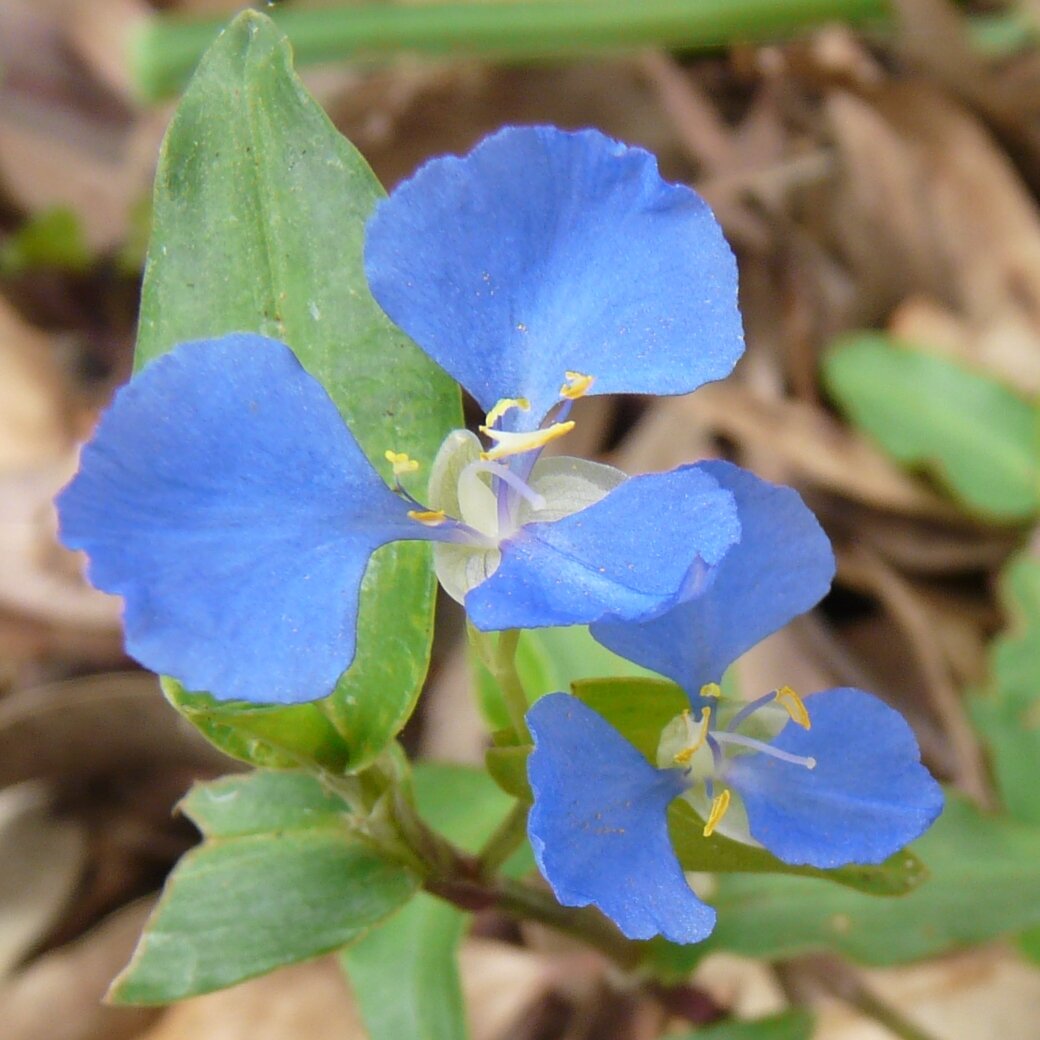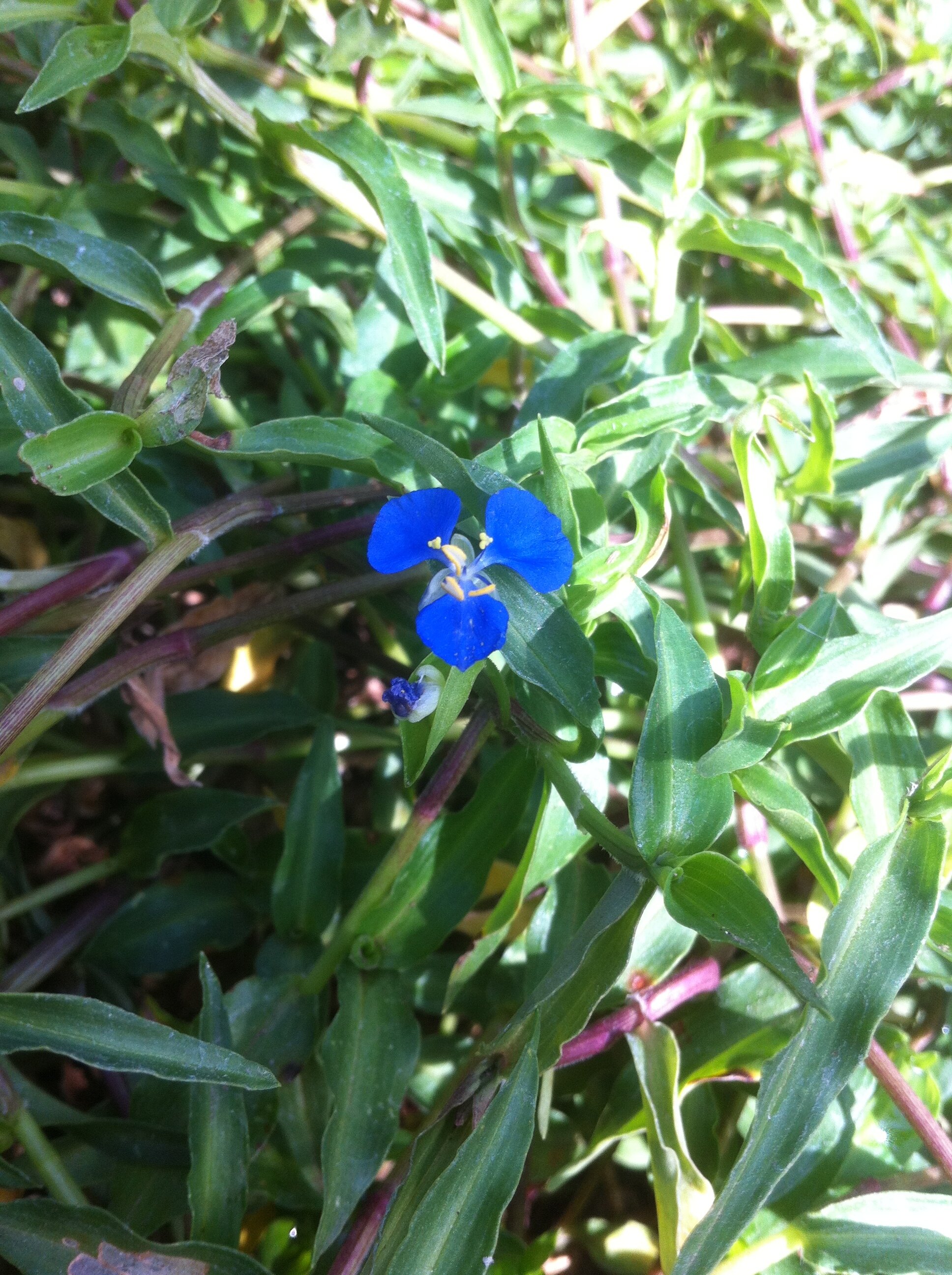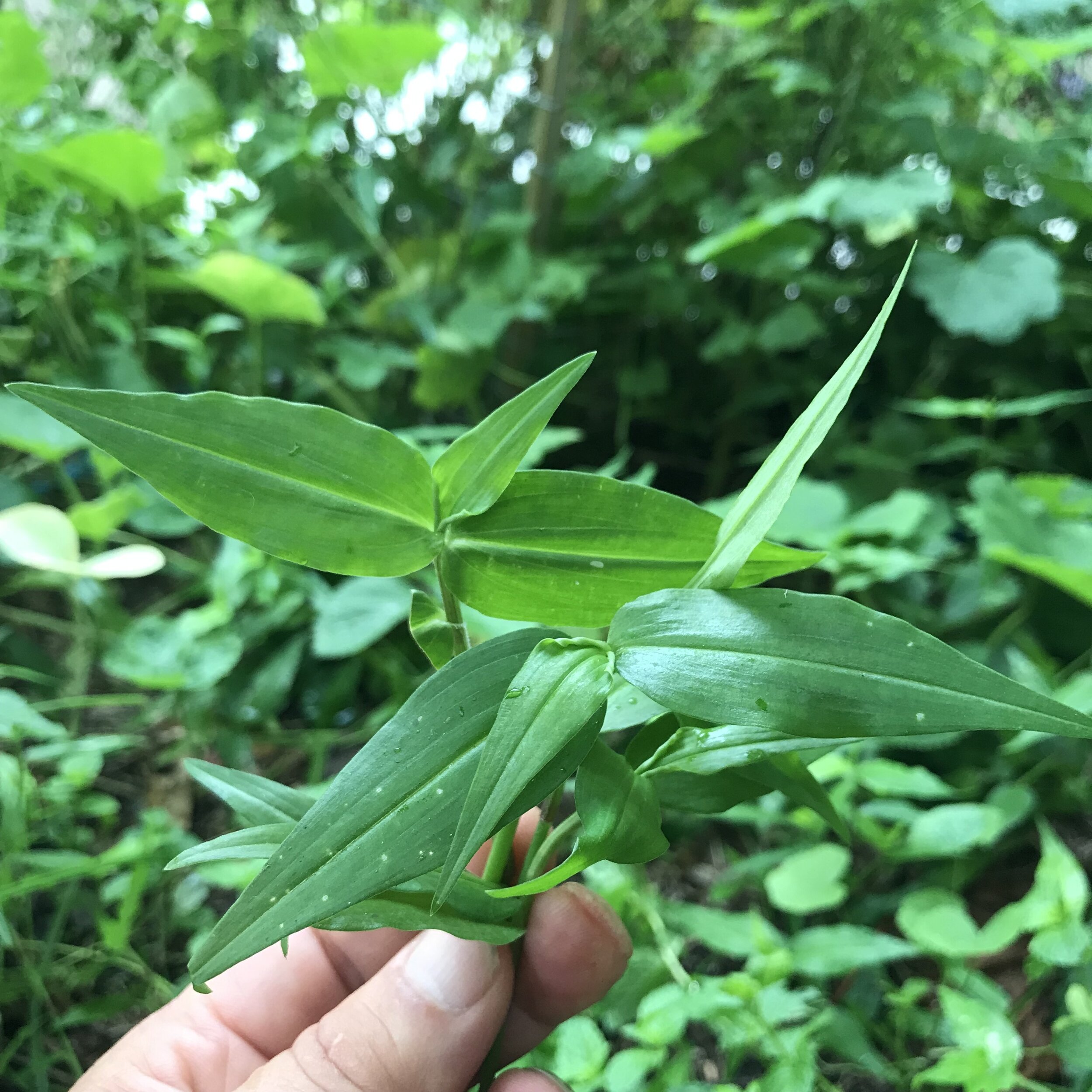Scurvy weed: How to identify it and use it to create new recipes.
Learning about Scurvy weed and how to respectfully forage it, can be a way of celebrating the original keepers of the knowledge we use today and to implement native wild foods in our diets.
In this article you will find the information you need if you are new to foraging and want to learn more about this incredible wild food.
The application of knowledge to create technologies is an integral part of the heritage and future of Australia. It is also essential to sustainable development. In traditional Aboriginal societies science and technology were used to manage the environment for the benefit of all people.
–Australian National Botanic Gardens Education Services, 2000
Scurvy weed (Commelina Cyanea), native to the eastern part of Australia, has been eaten as a green vegetable by Aboriginal Australians and also used as a medicinal plant by early non-indigenous colonists to alleviate the symptoms of scurvy. In fact, this plant was found to help with the symptoms of this disease because of its high concentration of vitamin C. The medicinal qualities of this plant are what gave it its popular name of scurvy weed.
Despite the part that this plant played in the colonial history of Australia, scurvy weed is a colourful and easily identifiable plant that can also be a great versatile ingredient to add to the forager’s kitchen.
Scurvy weed is native to Australia and shouldn’t be confused with the similar looking, common, exotic yet naturalised ‘trad’ or Tradescantia. “Trad” has distinctive dark green leaves and its flowers are white. There are also a number of commercially available tradescantias, quite common in old school rockery gardens and hanging pots. Those hybrids have been bred in various shades of purple and with green/white/purple patterns. There are contested information and opinions about the edibility of those plants.
How to identify scurvy weed
Snapshot
Scurvy weed grows low and expands horizontally covering the ground. This plant is usually found in high humidity areas under the shade of trees. It’s an evergreen that grows creating dense mats of delicate and freshly runners. Scurvy weed’s roots usually sprout from its branching joints. The plant can spread for 3 to 5 meters or even further in the right conditions and during warmer months its green mat is dotted with bright blue flowers.
Leaves and stalks
The leaves are bright green, measuring up to 7 centimetres long and their shape resembles a miniature sward. The stems are knotted at the joints and can easily root from there. Even a small stem can spread quickly and take hold in a new location via vegetative propagation.
Flowers and seeds
The flowers are the distinctive features of the plant, with three equally sized, bright blue petals. The seeds are formed in a cream white capsule and are 2 to 3 millimetres wide.
Other look-alikes- >WARNING< Nerd space
Commelina cyanea is by far the most wide spread of the genus, there are however other less common blue flowered commelina in Australia, all edible: C. ensifolia, a native of tropical distribution in QLD, NT and WA; C. diffusa, very similar to C. cyanea and contested as synonomous, tropical distribution in QLD; C. benghalensis, exotic with a small distribution around Brisbane and east coast of QLD; C. lanceolata, a native with small distribution in QLD and NT; C. agrostophylla, native to far north QLD and NT.
How to use scurvy weed in your recipes
If you are trying to find a wild weed to substitute baby spinach in your recipes, scurvy weed might just do the trick as its leaves have a very similar taste. They can be used in soups and pies or used in fresh smoothies and salads. The flowers can be added to savoury or sweet dishes as a colourful garnish. If you need a boost at the start of your day you can try this recipe for a green smoothie (packed with wild greens) made as part of the Forage to Feast menu.
Method
Ingredients
Note: If you are foraging for weeds only every eat something you can identify 100% positively.
Add all ingredients to blender or Nutri Bullet and blend on high until mixed well. Serves two people, or drink it all as a breakfast replacement to power through your morning forage.
1/2 cup of fresh scurvy weed leaves
1/2 cup of fresh farmers friend leaves
1 teaspoon dried amaranth seeds
½ cup of frozen mango
1 whole banana (freeze prior in pieces for a thicker chilled smoothie)
2 cups unsweetened coconut milk (not the stuff from a tin, I use tetra pack if I don’t have fresh)
honey to taste, optional
DISCLAIMER: This information should be used as a guide only. It is not my intention to advise anyone on medical conditions, rather I'm just presenting a new way to look at the plants growing in your yard.
Let me help: if you are unsure about the identity of your plants tag me in a picture or comment below, and I’ll endeavour to help.
This article is one of the many that will be published in my book: Eat Weeds. Out now>
Resources:
https://bie.ala.org.auode/
https://en.wikipedia.org/wiki/Commelina_cyanea
http://www.db.weedyconnection.com/scurvy-weed-commelina-cyanea/
http://anpsa.org.au/c-cya.html
https://hunterlandcare.org.au/weed-or-native-commelina-cyanea-scurvy-weed/
https://www.survival.org.au/bf_commelina_cyanea.php
https://www.littleecofootprints.com/2013/02/foraging-scurvy-weed.html







